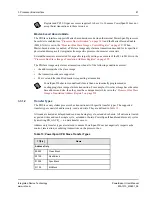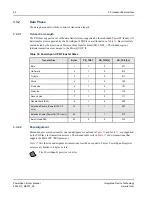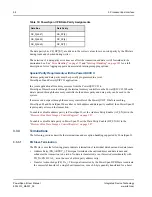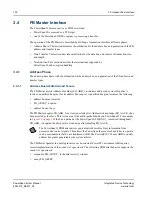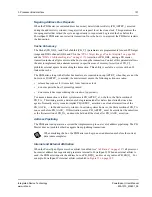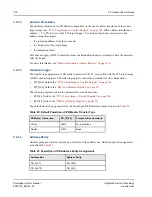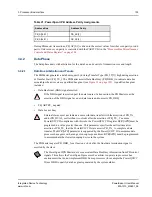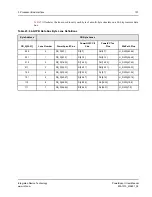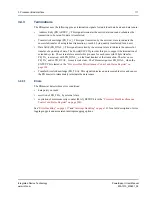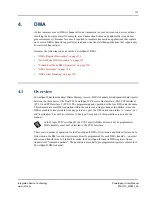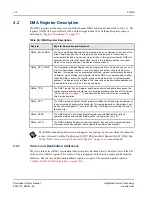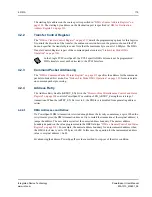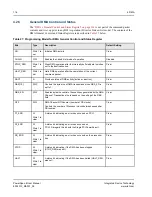
3. Processor Bus Interface
101
PowerSpan II User Manual
80A1010_MA001_09
Integrated Device Technology
www.idt.com
Negating Address Bus Requests
When the PB Master (as current address bus owner) detects Address Retry (PB_ARTRY_) asserted
during the address retry window, it negates its bus request for at least one clock. This guarantees the
snooping master that retried the cycle an opportunity to request and be granted the bus before the
PowerSpan II PB Master can restart its transaction. Once the bus is re-acquired, the PB Master restarts
the transaction.
Cache Coherency
The Global (PB_GBL_) and Cache Inhibit (PB_CI_) parameters are programmable for each PCI target
image and DMA channel (GBL and CI in the
“PCI-1 Target Image x Control Register” on page 268
“DMA x Attributes Register” on page 317
). Assertion of PB_GBL_ during a PB master
transaction instructs all processors on the bus to snoop the transaction. Control of this parameter allows
the user to implement non-coherent accesses in specific areas of memory. Assertion of PB_CI_
prohibits external agents from caching the transaction. This ability is useful in a system with an L2
look aside cache.
The PB Master, along with all other bus masters, are required to snoop ARTRY_ when they are not the
bus owner. If ARTRY_ is asserted, the masters must ensure the following actions are taken:
•
release bus request, if it is asserted, for at least one clock
•
do not acquire the bus if presently granted
•
do not assert bus request during the
window of opportunity
To ensure a transaction is retried, systems assert PB_ARTRY_ at, or before, the first assertion of
PB_TA_. This timing avoids a data tenure being terminated after data is transferred between bus
agents. Normally, a retry scenario implies PB_ARTRY_ assertion one clock after assertion of the
PB_AACK_ — in the address retry window. In certain systems however, the first assertion of PB_TA
can occur before PB_AACK_. If this situation occurs, PB_ARTRY_ must be asserted at the same time
as the first assertion of PB_TA_ and must be held until the clock after PB_AACK_ assertion.
Address Pipelining
The PB Master can operate in a system that implements up to one level of address pipelining. The PB
Master does not prohibit other bus agents from pipelining transactions.
Internal and External Arbitration
When the PowerSpan II processor bus arbiter is enabled (see
) all processor
bus master address bus requests and grants are internal to PowerSpan II. When an external arbiter is
used, the PB Master requests the address bus on PB_BR[1]_ and receives grants on PB_BG[1]_. For
example, PowerSpan II’s internal arbiter is disabled in
.
When mastering the bus, the PB Master can begin a new address tenure before the current
data tenure completes.

